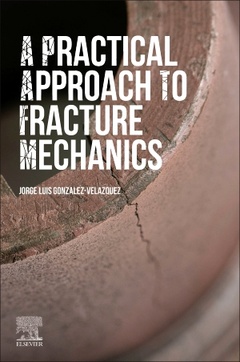Description
A Practical Approach to Fracture Mechanics
Language: English
284 p. · 15x22.8 cm · Paperback
Description
/li>Contents
/li>Biography
/li>Comment
/li>
A Practical Approach to Fracture Mechanics provides a concise overview on the fundamental concepts of fracture mechanics, discussing linear elastic fracture mechanics, fracture toughness, ductile fracture, slow crack propagation, structural integrity, and more. The book outlines analytical and experimental methods for determining the fracture resistance of mechanical and structural components, also demonstrating the use of fracture mechanics in failure analysis, reinforcement of cracked structures, and remaining life estimation. The characteristics of crack propagation induced by fatigue, stress-corrosion, creep, and absorbed hydrogen are also discussed. The book concludes with a chapter on the structural integrity analysis of cracked components alongside a real integrity assessment.
This book will be especially useful for students in mechanical, civil, industrial, metallurgical, aeronautical and chemical engineering, and for professional engineers looking for a refresher on core principles.
1. General Concepts of Mechanical Behavior and Fracture2. Linear Elastic Fracture Mechanics3. The Energy Criterion and Fracture Toughness4. Elastic-Plastic Fracture Mechanics5. Fracture Resistance of Engineering Materials6. Fatigue and Environmentally Assisted Crack Propagation7. Structural Integrity
- Concisely outlines the underlying fundamentals of fracture mechanics, making physical concepts clear and simple and providing easily-understood applied examples
- Includes solved problems of the most common calculations, along with step-by-step procedures to perform widely-used methods in fracture mechanics
- Demonstrates how to determine stress intensity factors and fracture toughness, estimate crack growth rate, calculate failure load, and other methods and techniques
These books may interest you

Mechanics of Fatigue 74.82 €



